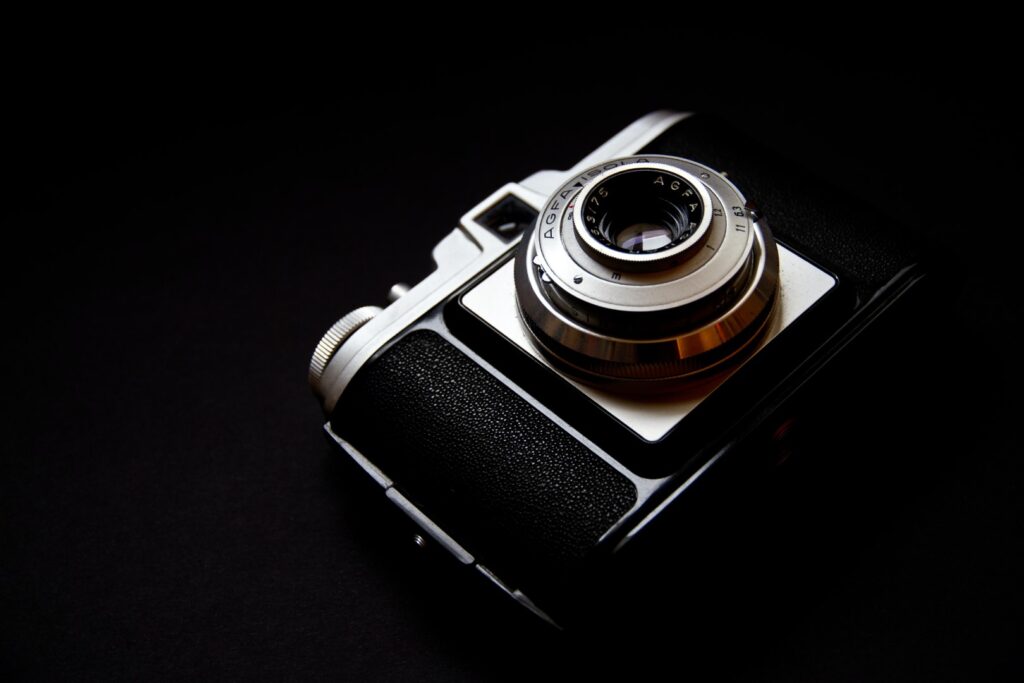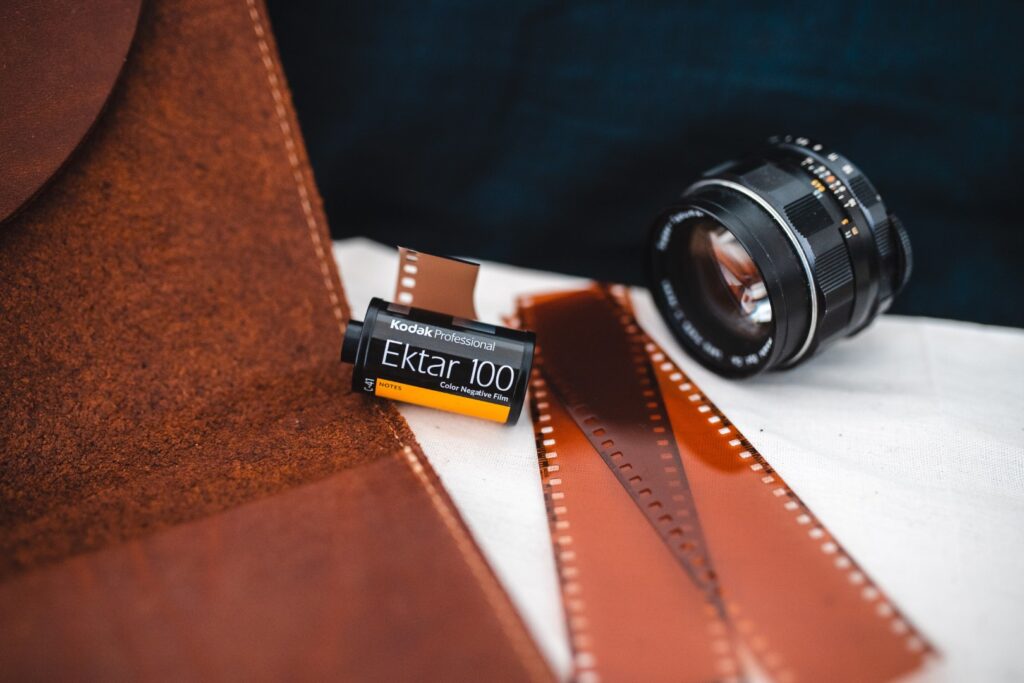Welcome to the exciting world of film photography! Today, we’ll be focusing on an intriguing piece of this world – the rangefinder film cameras. They are affordable, unique, and offer a distinctive experience that sets them apart from the crowd.
In this article, we’ll explore everything you need to know about these cameras. From their operation to their advantages, how they differ from SLRs, to the film sizes they use. We’ll also answer the big question: can you use interchangeable lenses with a rangefinder camera? And of course, we’ll introduce you to some of the best, yet affordable, rangefinder film cameras on the market. So let’s jump right in and start our journey in the world of rangefinder film cameras!
Understanding Rangefinder Cameras
You might be wondering, “What exactly is a rangefinder camera?” Great question! Let’s get to know these fascinating devices a little better.
A rangefinder camera, in essence, is a type of camera that photographers use to measure the distance from the camera to the subject. This measurement helps to take sharp, in-focus pictures. The name ‘rangefinder’ itself comes from this unique distance-measuring feature.
But how does a rangefinder camera work? It’s all about the clever design. When you look through the viewfinder, you’ll see two images. As you adjust the focus ring, these two images move. When they perfectly align and merge into one, congratulations! Your subject is in focus. This system is known as the coupled rangefinder, and it’s what gives these cameras their name and their unique focusing capability. The beauty of this design lies in its simplicity and precision. It allows you to focus quickly, accurately, and with an intuitive sense of the scene before you.
Rangefinder vs. SLR: What is the difference?
Let’s delve into another popular type of camera to help us better understand our rangefinders: the SLR, or Single-Lens Reflex camera. SLR cameras have a mirror and prism system. When you look through the viewfinder, you see exactly what the lens sees, thanks to this system. When you press the shutter button, the mirror flips up, allowing light to hit the film or digital sensor and capture the image.
So, how do rangefinders and SLRs stack up against each other? Here are some of the key differences:
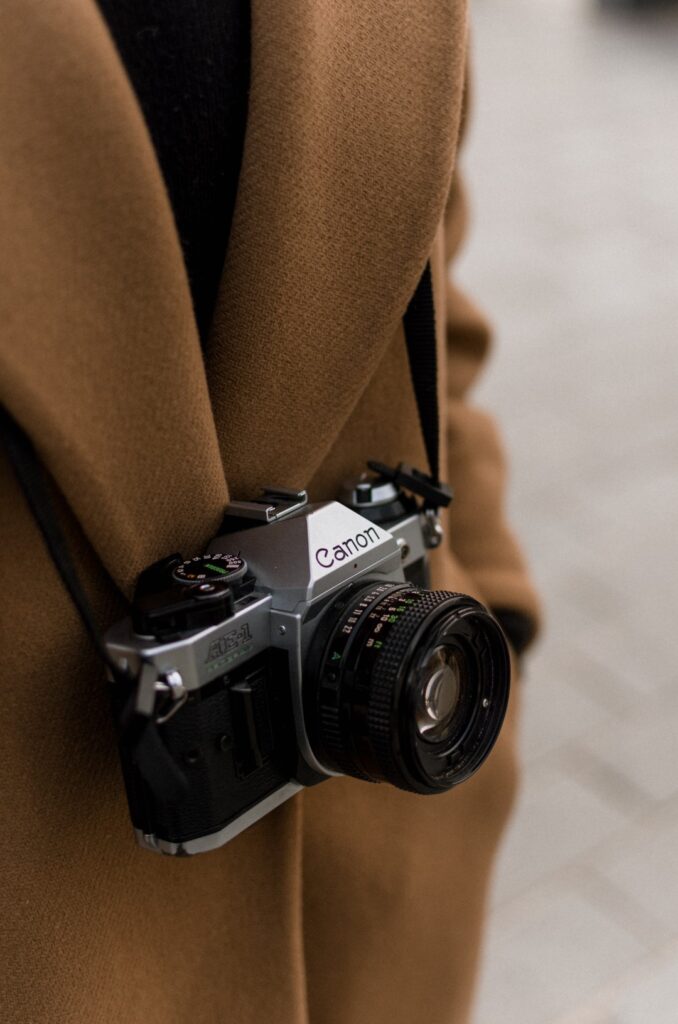
- Viewfinder: SLRs let you see exactly what the lens sees, while rangefinders have a separate viewfinder. This difference means that with an SLR, what you see is what you get. In contrast, with a rangefinder, you might experience a slight difference between what you see through the viewfinder and the final shot, especially at close distances.
- Size and Weight: Generally, rangefinder cameras are smaller and lighter than their SLR counterparts. This makes them perfect companions for photographers on the go.
- Noise and Vibration: SLRs have a mirror that flips up when you take a photo, which causes some noise and vibration. Rangefinders, lacking this mirror, operate more quietly and with less shake.
- Focusing: With SLRs, you focus by looking through the lens. In rangefinders, you align two superimposed images in the viewfinder. Some photographers find the rangefinder approach quicker and more intuitive, especially in street photography settings.
Both types have their strengths and weaknesses, and the choice between an SLR and a rangefinder often comes down to personal preference and the type of photography you enjoy. Each offers a unique way of capturing the world around you.
Why Choose a Rangefinder Camera?
So, you now know what a rangefinder camera is and how it differs from an SLR. But why should you consider choosing one? What makes rangefinder cameras stand out? Here are some key advantages that might make you want to pick up a rangefinder on your next photography adventure:
- Size Matters: Rangefinder cameras are typically compact and lightweight. This makes them perfect for travel and street photography. You can easily carry them around all day without feeling weighed down.
- Quiet Operation: Without the mirror slap of an SLR, rangefinders operate quietly. This feature is a real advantage when you need to capture candid shots without drawing attention to yourself.
- Fast and Accurate Focusing: Thanks to the coupled rangefinder mechanism, focusing is often quicker and more accurate compared to other camera types. This is especially helpful in dynamic, fast-paced situations where you don’t have time to fuss over focus.
- Framing Benefits: With rangefinders, the viewfinder is often brighter and offers a wider field of view than what the lens captures. This can help you anticipate and include (or exclude) elements entering or leaving your frame, giving you more control over your composition.
- Battery Life: As rangefinders are mechanically simpler and lack the power-draining mirror and prism system of SLRs, they often boast longer battery life.
- Unique Aesthetic: Lastly, and perhaps most subjectively, images taken with rangefinder cameras often have a distinct aesthetic. The rangefinder design lends itself to certain types of lenses and optical designs, which can result in unique image characteristics.
Each of these advantages adds up to make rangefinder cameras an appealing choice for many photographers.
Which Film Sizes do Rangefinder Cameras use?
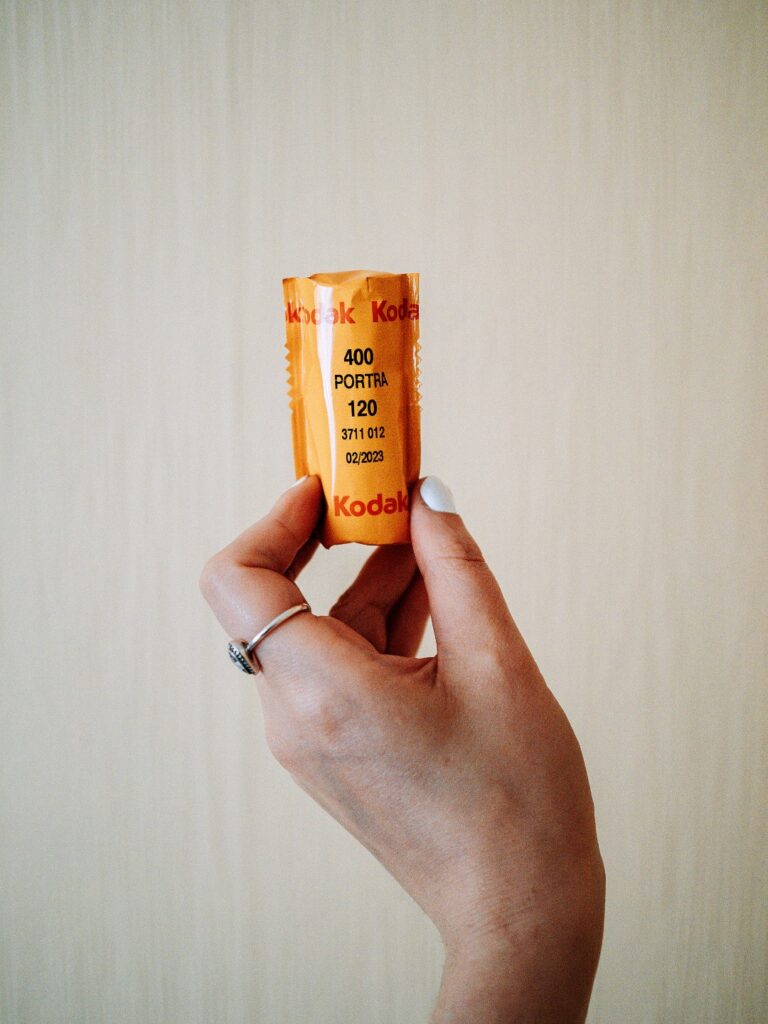
Now, let’s talk about the film sizes that rangefinder cameras use. It’s an important aspect to consider, as the size of the film can influence the quality of your photos and the overall shooting experience.
The most common film size you’ll encounter in rangefinder cameras is the 35mm format, also known as 135 film. This format is widely used due to its excellent balance between image quality, cost, and ease of use. The 35mm film provides a good amount of detail for most purposes while still being compact and easy to handle.
Some rangefinder cameras, however, might use medium format film, which is larger and provides more detail but is also bulkier and more expensive. Medium format rangefinders are less common, but they’re out there for those who crave that extra level of detail and don’t mind the added size and cost.
Interchangeability of Lenses in Rangefinder Cameras
You may be wondering, “Can I change lenses on a rangefinder camera?” The answer is, yes, you absolutely can! Many rangefinder cameras offer the flexibility of interchangeable lenses, just like their SLR counterparts.
The ability to switch lenses allows you to adapt to different shooting conditions and creative demands. Want to capture a stunning landscape? Slap on a wide-angle lens. Need to get close to a far-off subject? A telephoto lens is your friend.
However, keep in mind that not all rangefinder cameras have this feature. Some models have a fixed lens, meaning you can’t change it. These can still be excellent cameras, offering high-quality lenses that are perfectly matched to the camera body. But if you want the flexibility to change your lens, make sure to look for a rangefinder camera that offers this feature.
Top Affordable Rangefinder Film Cameras
Alright, we’ve navigated through the technicalities and now we’re at the exciting part: shopping for your new rangefinder camera! We’ve compiled a list of some of the best and most affordable rangefinder film cameras that you can get your hands on today.
1. Canon Canonet QL17 GIII
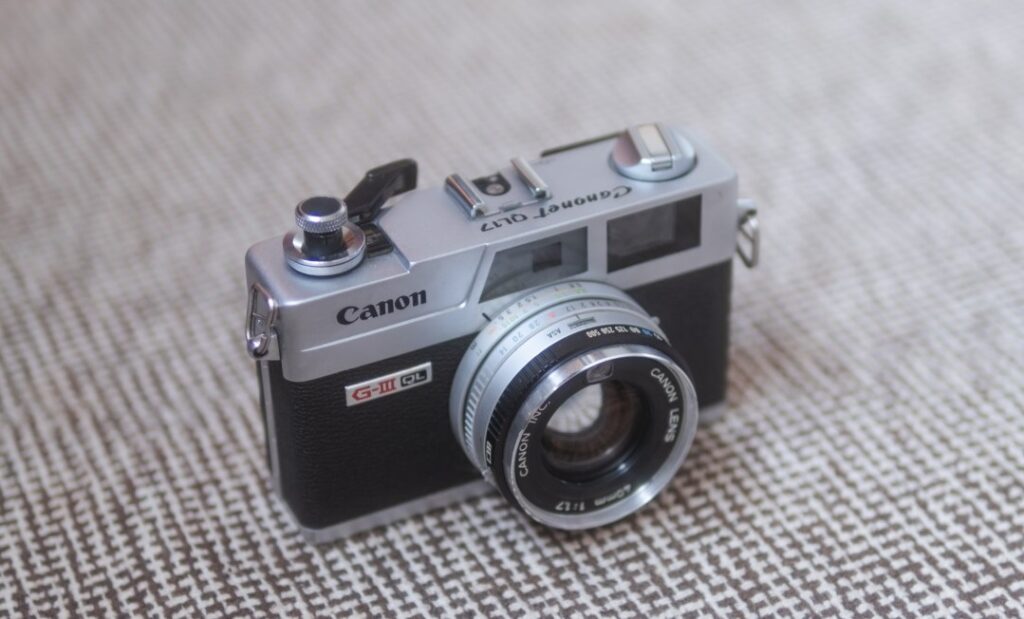
This camera is an excellent entry point into the world of rangefinder photography. Known as the “Poor Man’s Leica,” the Canon Canonet QL17 GIII offers a sharp 40mm f/1.7 lens that’s perfect for various shooting conditions. It’s compact, solidly built, and features a quick-loading (QL) system for the film, making it easy to use for beginners. As for the price, it’s one of the more affordable options on the market, often found under $200.
2. Olympus 35 RC
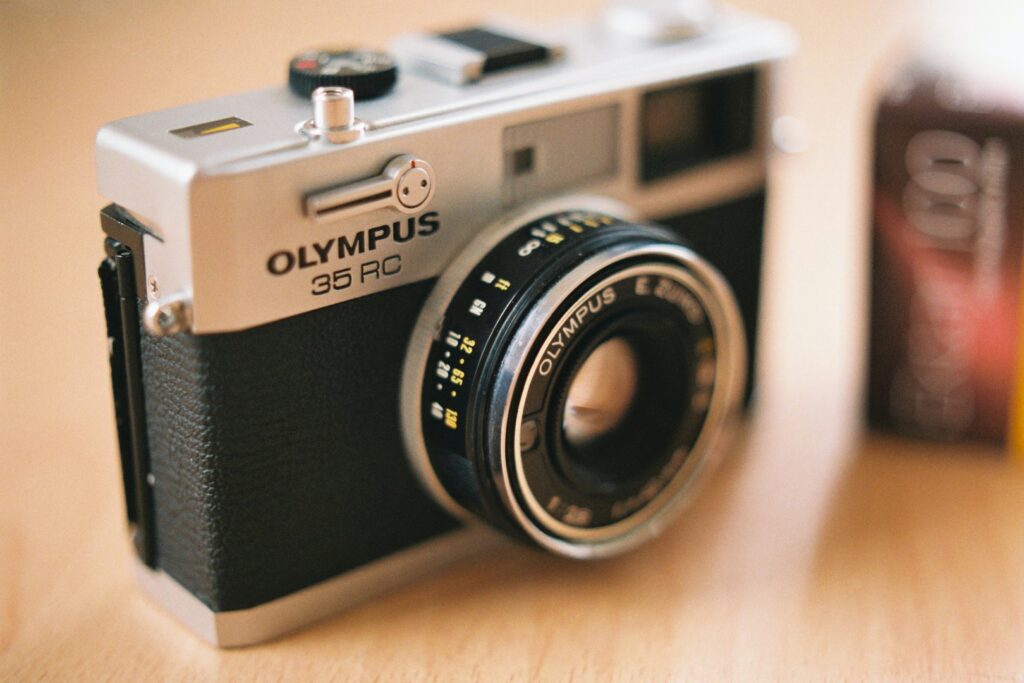
Next up, we have the Olympus 35 RC. This camera is a gem among affordable rangefinders. It’s a fully mechanical camera, meaning it can operate entirely without batteries – a rare feature for a camera with an inbuilt light meter. The Olympus 35 RC is fitted with a sharp 42mm f/2.8 E. Zuiko lens that delivers outstanding image quality. Its compact size and straightforward controls make it a favorite among street photographers. The Olympus 35 RC is also quite affordable, often found in the $100-$200 range.
3. Minolta Hi-Matic 7sll
The Minolta Hi-Matic 7sII is another worthy contender in the affordable rangefinder realm. It boasts a fast 40mm f/1.7 Rokkor lens, known for its excellent sharpness and contrast. The camera offers both priority automatic exposure and full manual controls, allowing you to grow with the camera as you master film photography. Plus, its sturdy build and classic design are sure to turn heads. Prices for the Minolta Hi-Matic 7sII can vary, but you can typically find a good one for between $150-$250.
4. Yashica Electro 35 GSN

The Yashica Electro 35 GSN is a cult classic among film photographers. It sports a fast and sharp 45mm f/1.7 lens that produces beautiful images. This camera is aperture-priority, meaning you set the aperture and the camera chooses the shutter speed, which can be a convenient feature for those who prefer to focus on depth of field. It’s also known for its low-light capabilities, thanks to the large maximum aperture and step-less electronic shutter. The Yashica Electro 35 GSN is generally priced around $100-$200.
5. Voigtlander Bessa R2A
Last but certainly not least, we have the Voigtlander Bessa R2A. This camera is a bit of a step up in terms of price, but it’s well worth the investment. The Bessa R2A is a modern rangefinder with aperture-priority and manual modes, a built-in light meter, and compatibility with Leica M-mount lenses. This offers an array of top-notch lenses for you to choose from, if you’re inclined to invest further in your rangefinder journey. The Bessa R2A typically sells for around $500-$700.
These are just a few of the fantastic rangefinder film cameras available on the market. Each one has its own unique features and charm, and all of them offer an excellent entry into the world of rangefinder photography without breaking the bank. In the realm of rangefinder cameras, “affordable” can mean different things to different people. For example, while the Voigtlander Bessa R2A may sit comfortably within one person’s budget, it might stretch another’s too far. Hence, it’s important to keep in mind that “affordable” is a relative term. But fear not! If your pockets aren’t too deep or if you’re just dipping your toes into the fascinating world of rangefinder photography, there are options even more budget-friendly than those listed above. Check out our article for the most budget-friendly rangefinders out there if you are really looking for the most cost-effective options. Happy shooting!

